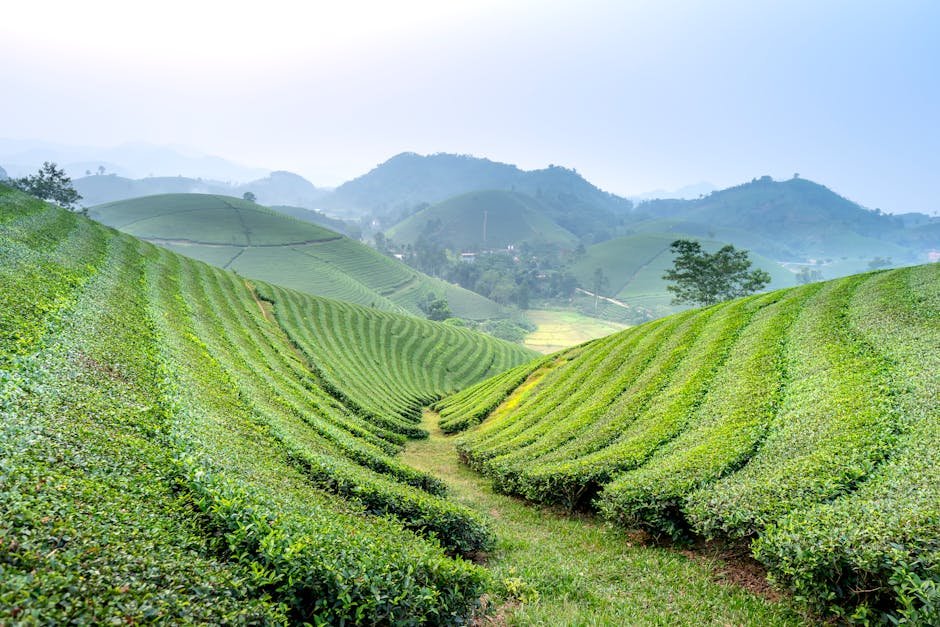Why Darjeeling Tea Is Dubbed the "Champagne of Teas"
The Origin of Darjeeling Tea
Darjeeling tea is a premium tea originating from the Darjeeling district in India. The unique flavor of Darjeeling tea comes from the region's high elevation, fertile soil, and ideal climate conditions. Grown exclusively in the mountains of Darjeeling, this tea is often referred to as the "Champagne of Teas" due to its exquisite aroma and distinct muscatel taste.
What Sets Darjeeling Tea Apart
Darjeeling tea is often called the "Champagne of Teas" due to its unique flavor and aroma, similar to the way champagne stands out among other wines. The distinctive taste of Darjeeling tea comes from being grown in the high-altitude tea gardens of the Darjeeling region in India. These high altitudes and specific climatic conditions give the tea a delicate and floral taste, unlike any other tea. Additionally, Darjeeling tea is harvested in small quantities, making it a prized and sought-after variety among tea enthusiasts worldwide.
The Unique Terroir of Darjeeling
Darjeeling tea is often called the "Champagne of Teas" because of the region where it's grown. The unique terroir of Darjeeling, which includes its high altitude, cool climate, and mountainous terrain, gives the tea leaves a distinctive flavor profile. Darjeeling is located in the Indian state of West Bengal, with its tea gardens situated at elevations ranging from 2000 to 7000 feet above sea level. This high altitude, combined with the misty and cool weather conditions, results in slow growth of the tea bushes and improves the flavor complexity of the leaves. The soil in Darjeeling is also rich in minerals, contributing to the unique taste and aroma of the tea. This terroir is what sets Darjeeling tea apart from other teas and makes it widely regarded as one of the finest teas in the world.
Darjeeling Tea Grades and Varieties
Darjeeling tea is often called the "Champagne of Teas" for its unique flavor and aroma. There are various grades of Darjeeling tea, each offering distinct characteristics. Here's a quick rundown:
First Flush: Known for its delicate flavor and light color, first flush Darjeeling is harvested early in the spring.
Second Flush: This grade is harvested in late spring or early summer, offering a more full-bodied flavor with a muscatel taste.
Autumnal Flush: Harvested in the autumn, this grade of Darjeeling tea has a richer, smoother flavor.
Each grade of Darjeeling tea offers a different taste profile, allowing tea connoisseurs to explore a wide range of flavors within this renowned tea category.
The Cultivation Process of Darjeeling Tea
Darjeeling tea is often called the "Champagne of Teas" because of its unique flavor and aroma. The tea is grown in the Darjeeling region of India, located in the foothills of the Himalayas. Here's how Darjeeling tea is cultivated:
High Altitude Growth: Darjeeling tea is cultivated at high altitudes, ranging from 500 to 2,200 meters above sea level. This elevation contributes to the tea's distinctive taste and character.
Plucking and Processing: The tea leaves are hand-plucked, usually in the early morning when the leaves contain the highest concentration of flavor. After plucking, the leaves undergo minimal processing to preserve their delicate flavors.
Seasonal Variations: Darjeeling tea is harvested in different flushes or seasons, each yielding a unique flavor profile. The first flush, harvested in spring, is known for its light and flowery taste, while the second flush, harvested in late spring and early summer, produces a more full-bodied and muscatel-flavored tea.
These factors, combined with the region's terroir and skilled tea producers, make Darjeeling tea a prized and sought-after beverage worldwide.
Harvesting and Processing Techniques
Darjeeling tea is often called the "Champagne of Teas" because of its unique taste and quality. The tea leaves are hand-picked during specific times of the year to ensure the best flavor. After picking, the leaves undergo a minimal amount of oxidation to preserve their delicate taste, aroma, and color. This process requires precision and skill to maintain the tea's distinct characteristics.
Flavor Profile of Darjeeling Tea
Darjeeling tea is often compared to champagne for its unique and delicate flavor. It is known for its muscatel, sweet, and sometimes floral notes. This tea offers a light and astringent taste with hints of fruitiness. The flavor can vary depending on the tea estate where it is grown, the tea flush, and the processing method used.
Health Benefits of Darjeeling Tea
Darjeeling tea is often called the "Champagne of Teas" for good reason. It not only delights your taste buds but also offers various health benefits. Drinking Darjeeling tea can boost your immune system and help you fight off illnesses better. It is also a great way to relax and destress, promoting a sense of calm. Additionally, Darjeeling tea is rich in antioxidants, which can help protect your body from free radicals. Regular consumption of Darjeeling tea may also improve digestion and metabolism. So, go ahead and enjoy a cup of this flavorful tea while reaping its health benefits!
Sustainability Practices in Darjeeling Tea Production
Darjeeling tea producers are increasingly adopting sustainable practices to protect the environment and ensure the well-being of their workers. Organic farming methods such as using natural fertilizers and pesticides, rainwater harvesting, and bio-diversity conservation are being implemented to promote sustainability in Darjeeling tea production. Additionally, fair trade practices are being embraced to ensure that tea workers are treated fairly and receive a decent wage.
Where to Find Authentic Darjeeling Tea
Symphony of Leaves Tea has available for you, authentic Darjeeling tea from several artisanal growers in Darjeeling, India. Please see our Darjeeling sample box https://www.symphonyofleavestea.com/tea-boutique

